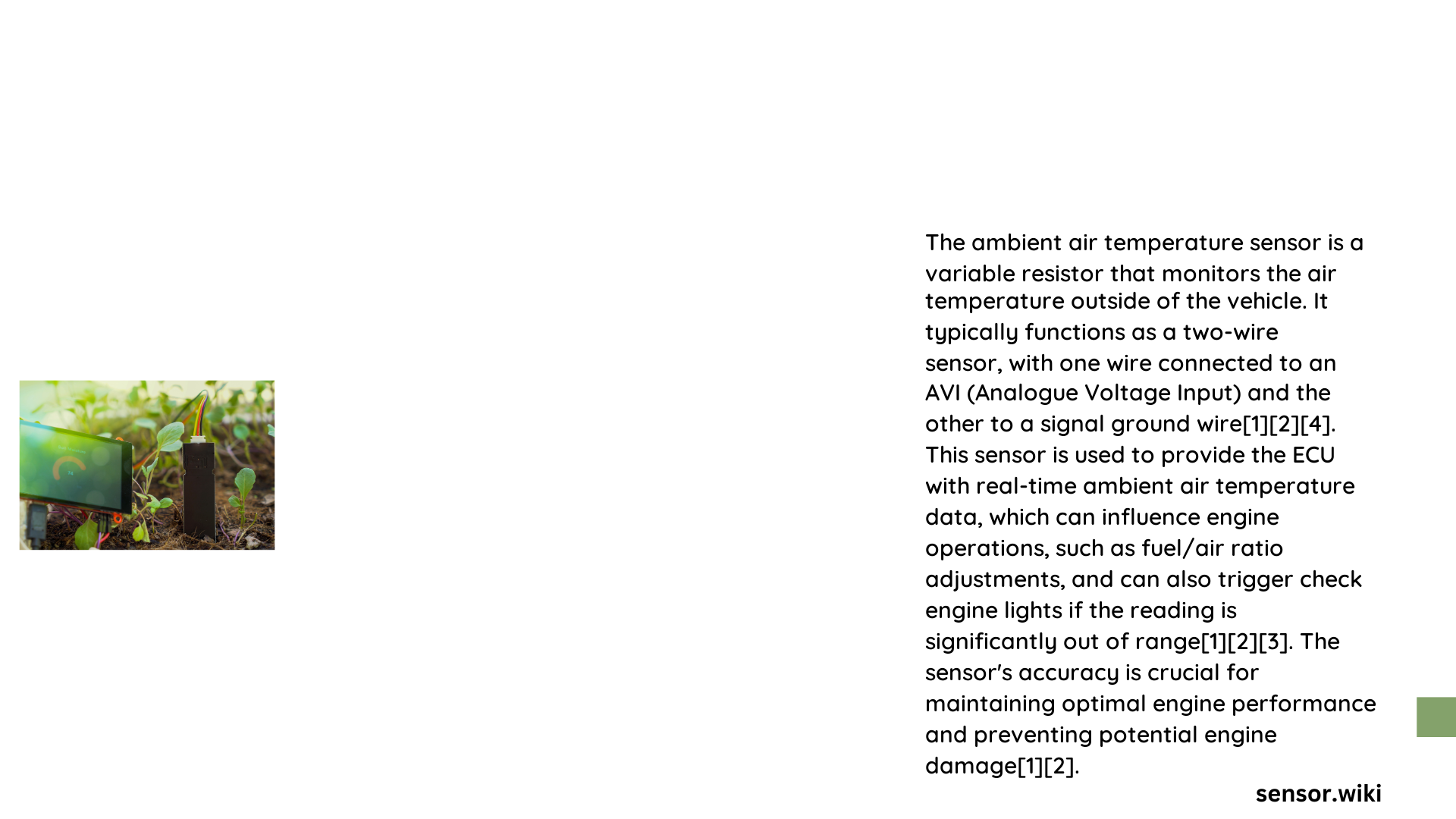The ambient air temperature sensor is a sophisticated electronic component functioning as a variable resistor that monitors environmental temperature with remarkable precision. This critical automotive sensor dynamically adjusts its electrical resistance in direct correlation with surrounding air temperature, enabling sophisticated engine management systems to make real-time performance adaptations across diverse thermal conditions.
What Makes the Ambient Air Temperature Sensor Unique?
How Does the Variable Resistor Mechanism Work?
The ambient air temperature sensor operates through a fundamental principle of electrical resistance variation. Utilizing Negative Temperature Coefficient (NTC) technology, the sensor’s resistance dramatically changes with temperature fluctuations.
Resistance Characteristics Table
| Temperature (°C) | Resistance (Ω) |
|---|---|
| -40 | 9,795 |
| 0 | 5,179 |
| +20 | 2,792 |
| +60 | 696.4 |
Why Are Resistance Changes Critical?
Resistance changes in the sensor provide crucial data points for automotive systems:
- Engine Control Module (ECM) Input: Translates temperature variations into precise fuel and ignition adjustments
- Real-time Performance Optimization: Enables dynamic air-fuel mixture corrections
- Emission Control: Supports precise environmental compensation mechanisms
What Technical Parameters Define Performance?

Response Time Specifications
The sensor’s performance is characterized by:
- Typical Response Time: Less than 35 seconds (per DIN EN 60539)
- Temperature Range: -40°C to +65°C
- Resistance Tolerance: ±3.5% at 25°C
How Precise Are Temperature Measurements?
Precision emerges from the sensor’s ability to:
1. Detect minute temperature fluctuations
2. Provide consistent resistance readings
3. Maintain calibration across extreme environmental conditions
What Are Practical Automotive Applications?
Where Do These Sensors Contribute?
Ambient air temperature sensors play critical roles in:
- Fuel injection timing optimization
- Ignition system management
- Climate control interfaces
- Ice warning systems
- Emissions compliance monitoring
Cost and Replacement Considerations
- Typical Replacement Cost: $20 – $100
- Installation Complexity: Moderate
- Location: Typically near front bumper
Technical Challenges and Limitations
What Constraints Exist?
- Vulnerability to physical damage
- Potential signal interference
- Calibration drift over extended periods
- Environmental exposure risks
Advanced Sensor Technologies
Future Development Directions
Emerging sensor technologies are focusing on:
– Enhanced material compositions
– Improved temperature sensitivity
– Reduced manufacturing costs
– Increased durability
Conclusion
The ambient air temperature sensor represents a sophisticated variable resistor that monitors environmental conditions with exceptional precision, serving as a critical component in modern automotive electronic systems.
